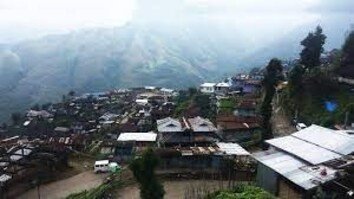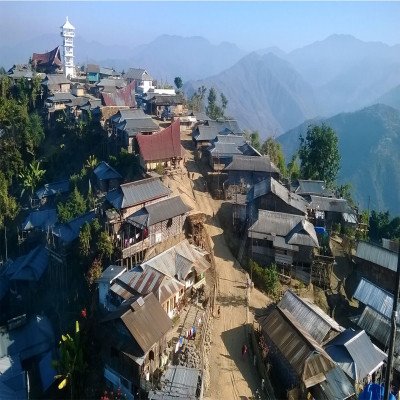Origin and History
Tuensang District: The Eastern Frontier of Nagaland, holds a significant place in the state’s history and cultural landscape. Its origin as an administrative entity dates back to the Naga Hills Tuensang Area (NHTA) under the Ministry of External Affairs in 1957. Subsequently, with the formation of Nagaland as a state in 1963, Tuensang became one of its initial three districts. The region’s history is marked by its relative isolation and the distinct identities of its various tribes, who fiercely guarded their traditions and territories for centuries. The integration of this frontier region into the Indian Union was a gradual process, with Tuensang playing a unique role in the early political developments of Nagaland.
Population and Tribe
The easternmost district of Nagaland, characterized by its rugged terrain and diverse ethnic composition, the population of Tuensang district, as per the 2011 census, stands at 196,801. The district is home to six major indigenous tribes: the Chang, Khiamniungan, Sangtam, Phom, Yimkhiung, and Tikhir. Each of these tribes possesses its own distinct language, customs, social structures, and vibrant cultural heritage, contributing to the rich tapestry of Nagaland’s tribal diversity. This intermingling of unique tribal identities defines much of the district’s social fabric.

Development and Infrastructure Development
Development in Tuensang has been a gradual but steady process, considering its remote location and historical challenges. Infrastructure development has seen progress in recent years, with improvements in road connectivity, education, healthcare, and power supply. However, the district still faces significant developmental gaps compared to other parts of Nagaland. Efforts are underway to enhance infrastructure, particularly in connecting remote villages and improving access to essential services. Recent initiatives focus on strengthening the road network to facilitate better transportation and economic opportunities.
Heritage
The rich heritage of Tuensang lies in the unique traditions, festivals, and craftsmanship of its constituent tribes. Each tribe boasts intricate weaving patterns, traditional attire, music, and dance forms that are integral to their identity. Tuensang is known as a land of cultural diversity and pristine natural beauty, offering a glimpse into the authentic tribal life of Nagaland. The traditional Morungs (youth dormitories) of various tribes serve as centers of learning and cultural preservation.
Known For and Events
Tuensang is known for its vibrant festivals, which are deeply rooted in agricultural cycles and social customs. These events are colourful displays of traditional attire, music, dances, and rituals. Prominent festivals include the Naknyulüm of the Chang, Monyu of the Phom, Tsokum of the Sangtam, Metemneo of the Yimkhiung, Khao-unok-ah of the Khiamniungan, and Thuwunyi of the Tikhir tribes. These festivals are integral to the social and cultural life of the communities.

Road System
The road system in Tuensang is crucial for connectivity within the district and with the rest of Nagaland. While significant progress has been made in recent years, many areas still face challenges with road conditions, especially during the monsoon season. National Highway 202 passes through Tuensang, linking it to major towns in the state. Ongoing efforts are focused on improving and expanding the road network to enhance accessibility and boost economic activities.
Current Facts and News
Current facts and news related to Tuensang often highlight developmental initiatives, cultural events, and community efforts. Recent reports may focus on the progress of infrastructure projects, the celebration of tribal festivals, or socio-economic developments in the region. For instance, news might cover the inauguration of new schools or healthcare facilities, updates on road construction projects, or the successful organization of a major tribal festival showcasing the district’s cultural richness.
Festival, Food, Agriculture, and Technology Integration
The numerous festivals celebrated in Tuensang are often accompanied by unique culinary traditions. Food habits vary among the tribes, with rice being a staple along with various meats, fermented products, and locally sourced vegetables. Agriculture is the primary occupation, with traditional farming practices still prevalent alongside modern techniques in some areas. Technology integration is gradually making its way into various sectors, including education, communication, and even agriculture, though its penetration varies across the district. Efforts are being made to leverage technology for improved governance, education, and economic opportunities.
Tuensang district, with its diverse tribes, rich cultural heritage, and ongoing developmental journey, stands as a testament to the unique character of Nagaland. Its vibrant festivals, traditional way of life, and the gradual integration of modern advancements paint a picture of a region striving to preserve its identity while embracing progress.
